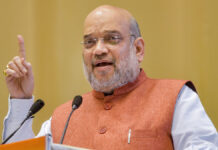India is a multilingual country. The Constitution of India has an exclusive chapter for patronage of languages. In this chapter there are twenty two languages, which are called Scheduled Languages. Besides there are a lot of spoken languages can be seen in nook and corner of the country. This multilingual nation has six Classical Languages i.e Tamil, Sanskrit, Telugu, Kannada, Malayalam and Odia. Tamil was the first Indian language to get the Classical Status in 2004, followed by Sanskrit in 2005, Telugu and Kannada in 2008 and Malayalam in 2013. Odia language declared as Classical Language in 2014 and the day was 11th March. So 11th March is considered as Classical Odia Language Day. There are certain criteria for the Classical Status like long and continuous literary heritage, more than thousand years of footprint in inscriptions, manuscripts etc. Our Odia Language fulfilled all the necessities cited by Government of India and declared as Sixth Classical Language with due Gazette Notification. Tamil was the first Classical Language of India (2004) and Odia was the sixth one (2014). Government of India established six Classical Centers for preserve, patronage and propagation of such languages.
.
The Centre of Excellence for Studies in Classical Odia, Ministry of Education, Government of India started doing research on different aspects of Classical Odia Language since its establishment in the year 2020. I have assigned to do Linguistic analysis on available texts of inscriptions found in Odisha. As we know inscriptions both rock edicts and copper plates are sources of origin and development of Odia language and script. My research work was submitted in due course of time and published as a book entitled- Rock Edicts of Odisha: Texts and Analysis. This book was released on the occasion of Classical Language Day on 11th March2023 by Honorable Governor Prof Ganeshi Lal. After this publication I have assigned to do research on another part of Inscription i.e copper plates of Odisha. While doing research I noticed the chronological development of Odia script in inscriptions, both rock edicts and copper plates. So I have given the title of the said paper as Inscriptional Journey of Classical Odia Language.
This particular area of investigation and research always inspired by two noted Epigraphists, one is James Prinsep, who was an English scholar and the founding editor of Asiatic Society of Bengal, popularly known as the father of Indian Epigraphy and the other one is an Indian scholar Rai Bahadur V. Venkayaya, father figure in Indian epigraphy who served as Chief Epigraphist of India from 1908 to 1912. In this paper the scholar is trying to focus on early Odia inscriptions with date, place, features etc. with the help of available referral works. Scholars in the field of epigraphy have discussed and focused the characteristics of Odia script as well as language. Noted scholar Dr. Suniti Kumar Chatterji rightly said, ‘the early Oriya of these inscriptions is a living speech’ (The Origin and Development of the Bengali Language, Calcutta, 1926).
. The Hatigumpha Inscription of Udayagiri Cave of 1st Century B. C, the Dhauli and Jaugarh inscriptions of 3rd Century B. C are some of the early inscriptions which highlight the past of Odia script. The distinctiveness of Odia language had received due recognition from various scholars like H. T. Colebrook, Sir George Grierson, John Beams, Rakhal Das Banerji, Dinesh Chandra Sircar, M. M. Chakraverti, Suniti Kumar Chatterji, B. C. Chabra, Satya Narayan Rajguru, Kunja Behari Tripathy, Kedarnath Mohapatra, Paramanand Acharya, Snigdha Tripathy and many more. On the basis of division of time Odia can be classified as Proto Odia, Old Odia, Middle Odia and Modern Odia. I have joined as a Senior Fellow at Centre of Excellence for Studies in Classical Odia, on 2nd November 2021, with an assignment entitled- Index of Inscriptions of Odisha with reference to Evolution of Odia language.
In inscriptions I have noticed a lot of Odia words like suna( gold), suta ( string), sebaka ( attendant), sarta ( condition), sabha sthali ( the place of assembly), hara( necklace), hida ( ridge), hatha( hand), niti( duty), nuna( salt), pata ( a document or charter), phula ( flower), kiki(some), chikitsa(treatment),tini(three),,pachha(behind/later) baisnama ( a devotee of Lord Vishnu), bahuti( armlet), bankia( a slanting chair/ a royal seat), barasa ( year), peta ( belly), puli ( a typical Odia sweet), puruna ( old) etc. We may say words of places, things, deities, persons etc with case markers, verbs etc can be identified in such inscriptions. The Kharavela inscription of 1st century B. C uses several words which are found intact further corrupted in Odia language. The inscription of King Gana of the 3rd century A.D in early Gupta script found at Bhadrak. It is now preserved at the Odisha State Museum. Scholars say it is engraved in Prakrit, but it is too short to throw any light on the evolution of Odia language. The earliest complete Odia inscription is however dated 1051 A. D.( Saka Era 973). It was discovered in the village of Urajam in the Chikakol district. It is now preserved in the Chennai Museum.it belongs to the reign of AnantaVerman Dev, grandfather of the emperor Chudangadev, whose capital was at Mukhalingam. The Urajam inscription language is Odia, script Nagari (Southern Variety).the language of the record is Southern Odia which is characterized by some features of colloquial Dravidian especially Telugu. We see at least seventeen Odia words in another copper plate found in Ganjam district. Writings on epigraphy like Sonepur Oriya Inscriptions of the time of King Bhanadeva in Indian Linguistics, Vol.XVIII by K. B. Tripathy, An early Oriya Inscription of the 8th year of King Bhanudeva Singha in Odisha Historical Journal Vol. I by D. C. Sircar and two other interesting writings of K. B. Tripathy one is The Inscrptions of the Sun Temple at Konark published in AIO Conference Journal , Jadavpur in 1969 and other one Siddheswar Inscription of Narasingha Dev IV published in Epigraphica Indica, Vol. XXIX and two major writings of Satya Narayana Rajguru one is Orissa Inscription on a Stone Image and the other one South Indian Inscriptions explain many undiscovered features of inscriptions discovered in various places in the state of Odisha. So we say Odisha is truly rich in materials for the study and research of Indian epigraphy. From 3rd century B. C to 1051 A. D the long path of development of Odia script simultaneously Odia language is really praise worthy. Similarly some earlier inscriptions like an inscribed Shiba Linga with Buddhist Dharani having script of 10th century A. D. found in Gohiria Sahi near Soro Railway station of Balasore district , the Surya image inscription of Maha Shiba Gupta having script of 13th century A. D, found in Gandibedha now preserved in Odisha State Museum, Srijang inscription of Ramachandra Deva dated saka era 1517 having script of 16th century A. D found in Srijang about seven miles North East of Bahanaga Bazar of Balasore, Bhadrakali Temple Inscrption found in Bhadrakali Temple premises in Bhadrak district having script of 3rd century A.D., Khadipada image inscription of Subhakaradeva having script of 8th century A. D., Sthaneswara temple inscription found in Sthaneswara temple, Manjuri in Bhandaripokhari having script of 15th century A. D. , Mahadeva temple inscription found in Ranipur Jharial having script of 10th/ 11th century A. D., show the development of Odia language being charecterised by the influence of Pali, Prakrit, Sanskrit , Telugu and other linguistic forces. During 1051 A. D to 1568 A. D a sizeable number of inscriptions found in Odisha out of which 18 inscriptions of Ganga dynasty and 50 inscriptions of Surya dynasty attracted scholars from India and abroad to do research. Such things are precious asset for scholars for further study and analysis. Two major inscriptions preserved in State Museum i. e Ananta Vasudev Temple inscription of Chandrika Devi written in 1278 A. D and other one Chateswar Temple inscription of Ananga Bhima Dev III are a few among such inscriptions.
Noted scholar Prof. V. S. Agrawalla rightly observes, ‘’ the Prakrit literature is not abiding interest for tracing the origin and development of almost all the New Indo Aryan languages like Hindi, Gujarati, Punjabi, Kashmiri, Sindhi, Bengali, Oriya, Assamese, Nepalese.’’ (Preface/ Prakrit Pingala). Sir George Grierson in his monumental work Linguistic Survey of India says, ‘’the Oriya verbal system is at once simple and complete.’’ Such observations say Odisha is rich in in materials for the study of Indian epigraphy. Asanpat inscription of 3rd century A. D, Maharaja Gana Bhadrakali Temple inscription, inscription of Ananta Shakti Verman of 5th century A. D, Dharmalingeswar Plate of Devendraverman of 652 A.D, 8th century A. D bilingual inscription of Bhubaneswar and many more inscriptions and copper plates have significance of origin and development of Odia script and language. Scholars like Satya Narayan Rajguru, Paramanand Acharya, Kedarnath Mohapatra, Dinesh Chandra Sircar, Rakhal Das Banerji, Kunjabehari Tripathy,Satyanarayan Rajguru, Paramanand Acharya, R. L. Mitra, Snigdha Tripathy, Herman Kulke in their seminal research works they have analyzed, explained, compared and glorified paleography of early Odia inscriptions. We may say that a lot of research can be done further to discover many untold stories related to Paleography. By establishing Centre of Excellence for Studies in Classical Odia at Bhubaneswar, the capital of Odisha, the Government of India deserves thanks, because this centre started a number of research projects including Index and Linguistic Analysis of Inscriptions. An eminent Epigraphist Dr. Snigdha Tripathy rightly observed in her monumental work on inscriptions ‘Descriptive Topographical Catalogue of Orissan Inscriptions’(2010), ‘Moreover inscriptions of different periods , dynasties and localities are scattered in volumes of various periodicals, several of them being rarely available to scholars of Orissan history. For their systematic study, however, scholars require a descriptive catalogue of all the extant records of a particular period, a king, his dynasty or of a particular territory.’ Some noted descriptions of Inscriptions can be cited here in this research article i. e-
1. Kurmesvara Temple Inscription at Srikakulam: this record of thirteen lines written in bilingual scripts is discovered on the South face of pillar in Kurmesvara Temple. It says that Vira Narasimha Deva made a gift of some of his land in the thirty third Anka year of his reign. From another inscription in the same temple his 33rd Anka year was current in Saka year 1227.
2. The Lingaraja Temple Inscription : It is incised on a stone fixed on the wall of the Jagamohan of the Lingaraja temple at Bhubaneswar, the capital city of Odisha. It corresponds to the 11th December, 1172. It says in Sakavda 1094 in the 4th auspicious year of the victorious reign of Srimad Rajarajadeva in the month of Dhanu and on the 9th tithi of the dark fort night , Mon five gold madhas were given for burning a perpetual lamp in the temple of Kirttivasa, as long as the existence of the Sun and the Moon.
3. Lakshmi Narasimha Temple Inscription at Simhachalam: On a stone in the northern entrance of the temple, corresponding date is 1134, has several words like dwadasi, ekadasi, dantapure, nrupati bira etc show the development of Odia words.
In this article I listed and discussed some rock edicts of Odisha in general to analyse the development of Odia script. I may conclude that the inscriptions of Odisha are treasure of Classical Odia language. The inscriptional journey of Odia language is really marvelous and memorable.







































